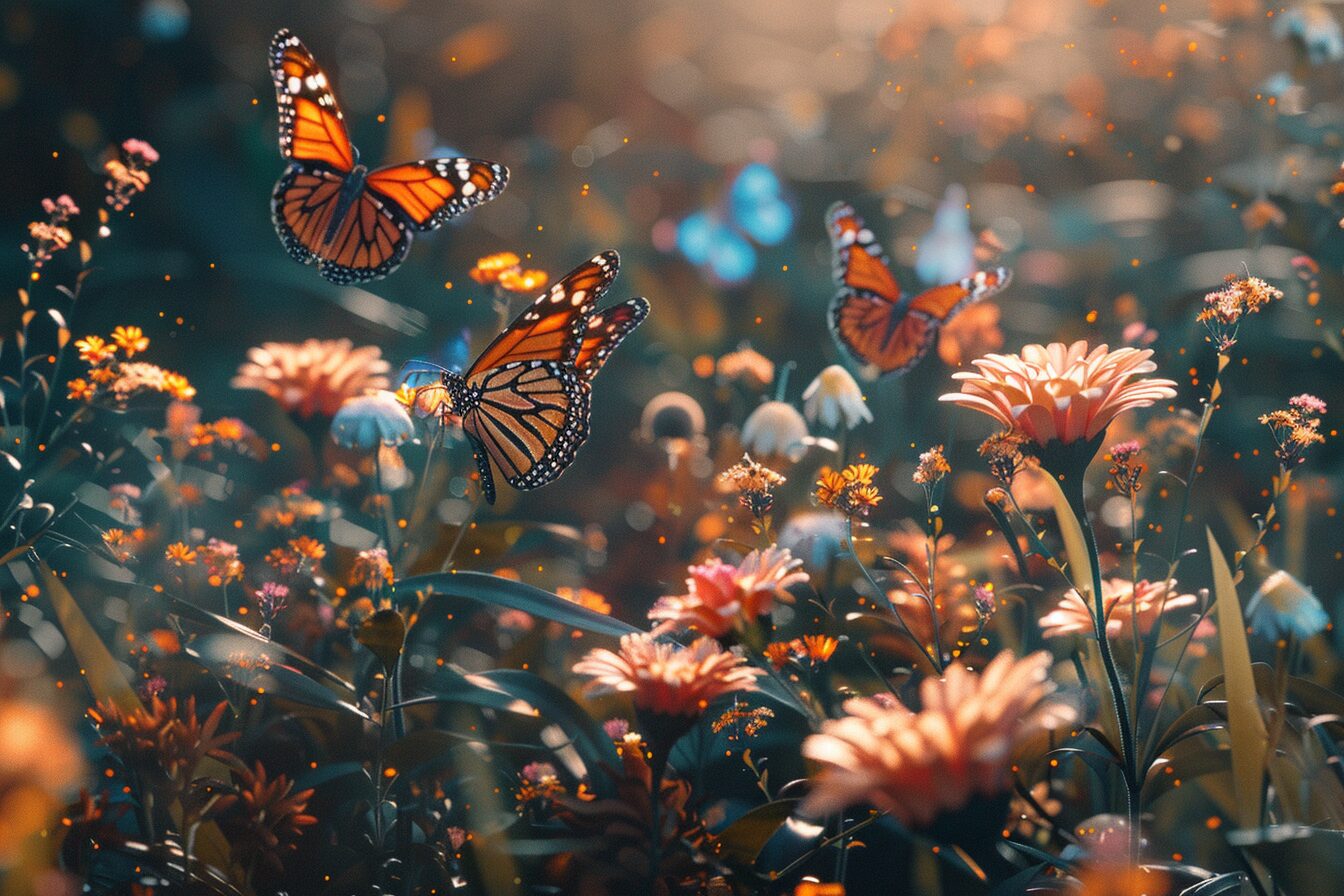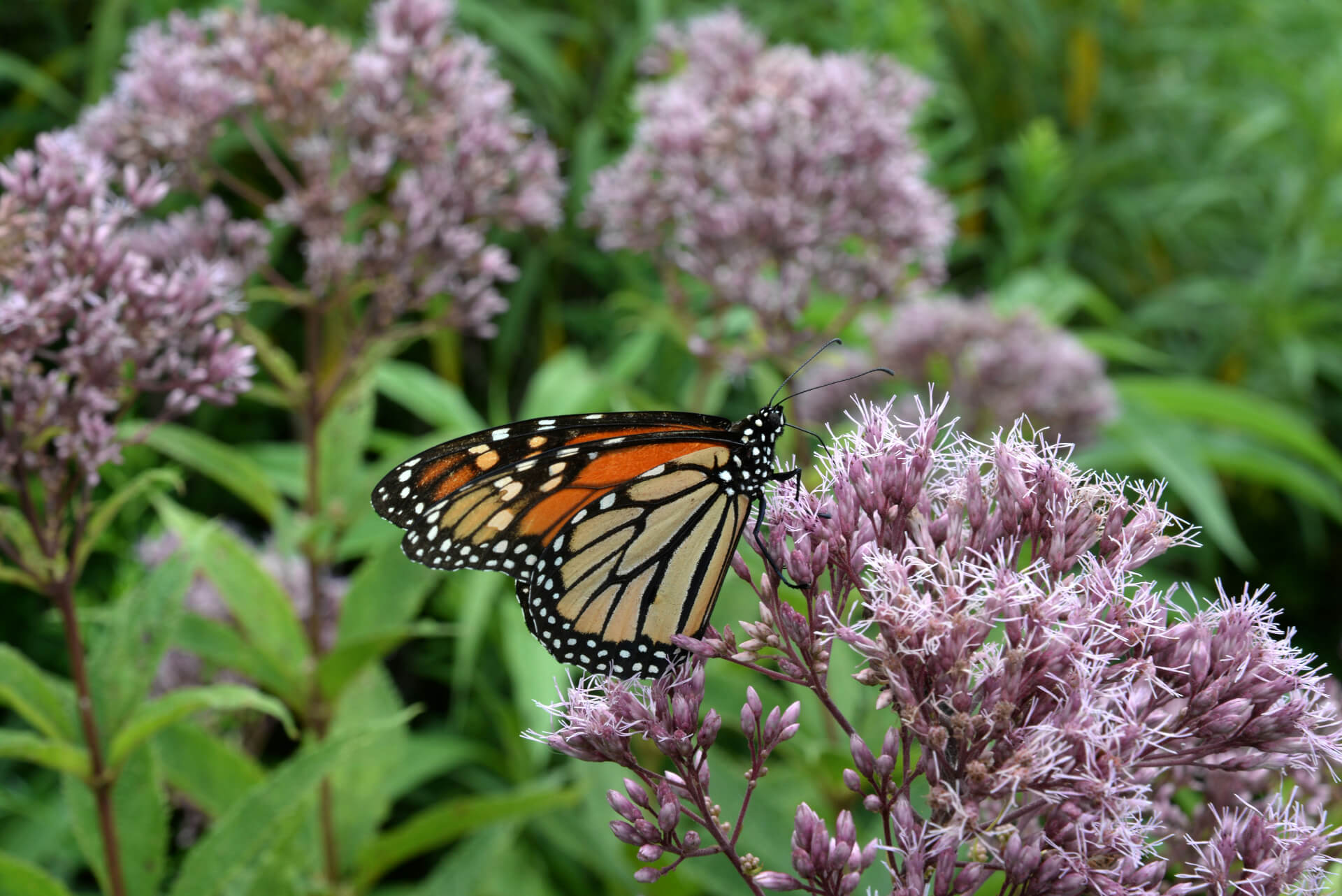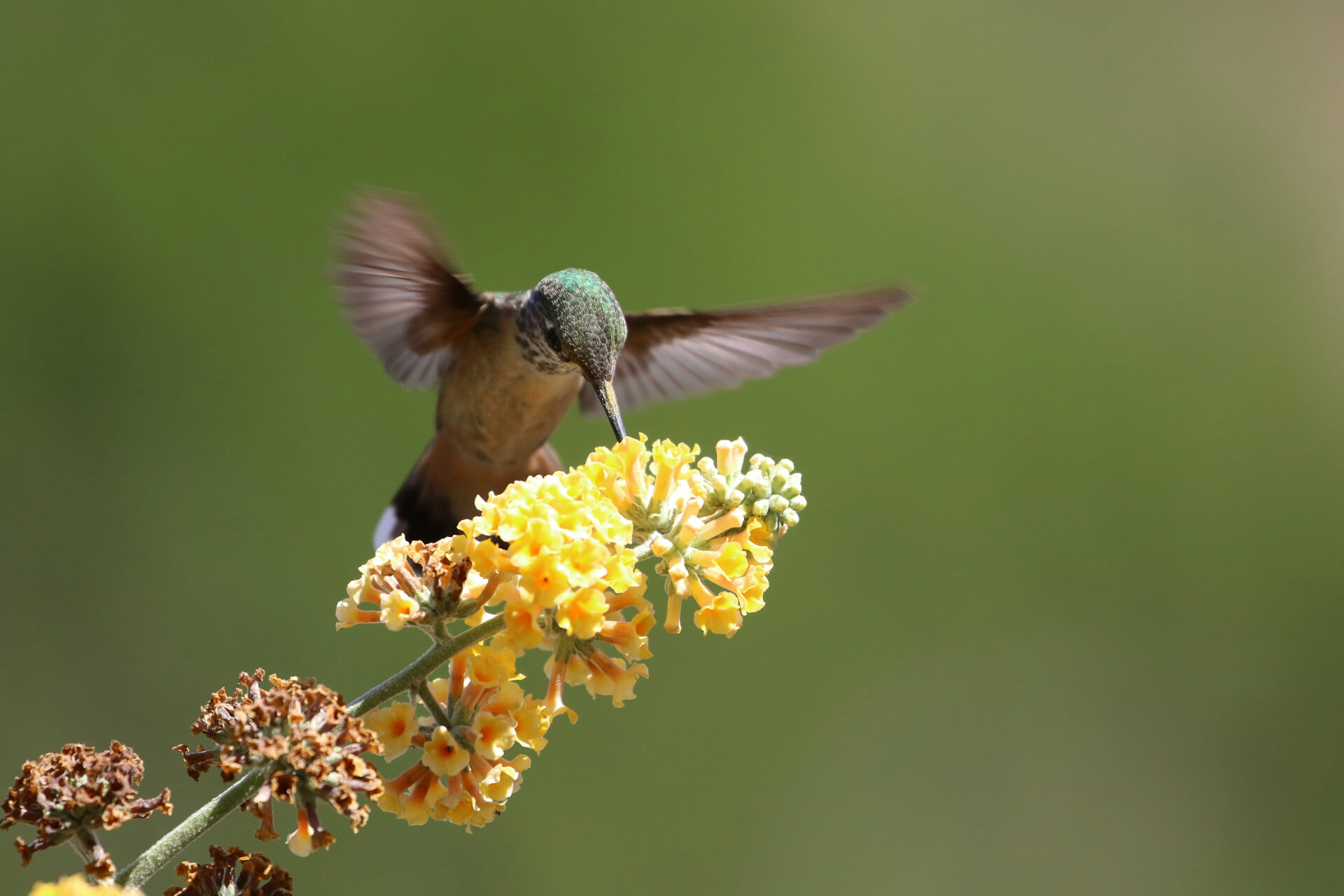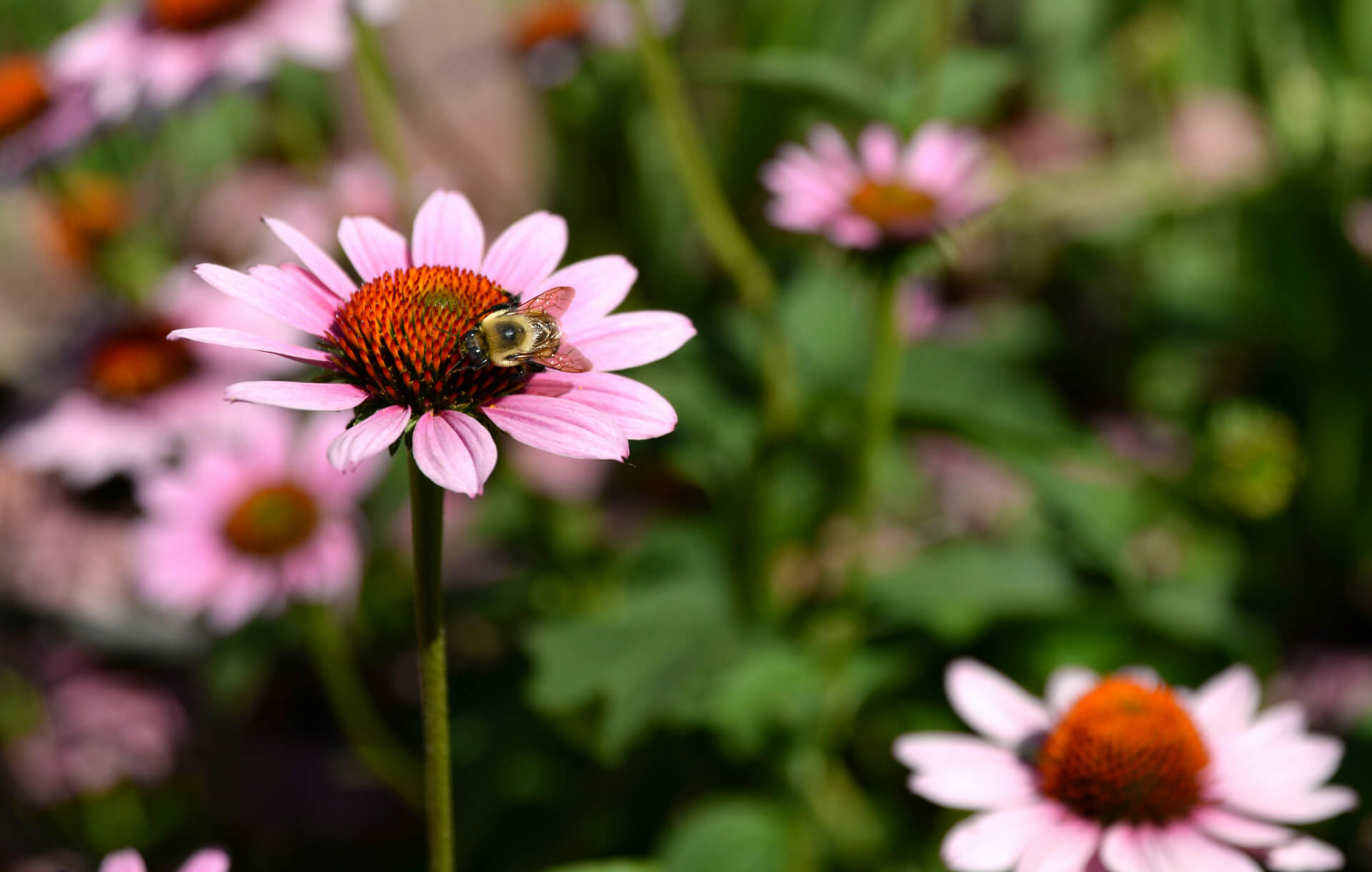
The Best Native Plants for Pollinators
We are reader-supported. When you buy through links on our site, we may earn affiliate commission.
Everyone has heard that the bees are disappearing. Kentucky bluegrass littering most yards is devoid of bees and butterflies. The mass exodus and the absence of pollinators are hurting the planet, and humanity must do something to return them to their original habitats. What is going on, and how can people bring pollinators back? Researching the best native plants for pollinators can help the plant heal and cause biodiversity to thrive in places where it hasn’t been for a long time.
What Are Native Plants and Pollinators?
Native plants refer to flora that originate from a specific area. They are naturally present, though native plants may not be around anymore due to pollution, climate change, human influences, and more. What is native varies from biome to biome, state to state, and country to country. They are critical to the planet because they are best suited for the habitat’s tendencies and composition.
Pollinators transport pollen from plant to plant, permitting them to grow and reproduce healthily. They are critical for natural beauty and agricultural yields. Some include but are not limited to:
- Hummingbirds
- Bees
- Moths
- Flies
- Butterflies
- Wasps
- Bats
- Beetles
- Various small mammals
Many pollinators, like species of bees and butterflies, are at risk and listed as endangered. As a result, many nonprofit and conservationist organizations have made it their mission to restore them.

Are Native Plants Better for Pollinators?
It doesn’t matter if it is rural or urban, old or freshly planted — pollinators flock to native plants. It is better for environments for this interaction to occur to keep habitats, species, and soil acclimated in the ways it became used to before anthropogenic influences.
Native plants and pollinators are meant for each other because of adaptation, and they develop deeper roots to renourish the planet. Urbanization and industry have permanently altered some areas, making pollinators strangers.
However, native plants and pollinators alike need more attention. Here is why:
- 33% of food bites you take are because of pollinators.
- Pollinator populations are declining.
- Pollinators and native plants evolved together, forming an undeniable symbiotic relationship.
Native plants also provide nest sites for pollinators, such as moths or bees. It puts them in safer environments where they previously thrived away from unexpected predators, illnesses, and more. However, the presence of native plants that bring pollinators is also beneficial for industries like agriculture because it invites certain insects that help with crop yields and pest control.
How to Learn About Native Plants
Native plants are more than flowers. They included grasses, trees, and everything in between. Numerous online and local resources exist for people who want to support their resident pollinators. How can you get nectar and pollen in the metaphorical hands of what wants and needs them most?
The easiest option is to look into worldwide online databases. The National Wildlife Federation has a native plant finder, for example. These are a few others in the USA, Canada, Europe, and others:
- Local and state environmental departments
- Pollinator Conservation Resource Center
- USDA Plants Database
- Royal Horticultural Society
- Canadian Wildlife Federation
- Pronatura

Here are a few activities you can do to become more familiar with native plants:
- Reach out to local gardening clubs or farmers markets and talk to them.
- Go on a seed-collecting mission to learn what seeds are around and flourishing in native conditions.
- Go on a hike and observe and take notes on what you see.
- Visit a local botanical garden.
- Research what it takes to get your property certified as a Wildlife Habitat.
- Attend local events and lectures at libraries or schools about local species.
The most important trait you should have is curiosity. This will keep you interested in this crucial mission of repollinating the planet. This information inspires the question — what should you plant where you are?
Pollinator-Friendly Plant List
Another resource for discovering the best native plants for pollinators in the U.S. is the Xerces Society for Invertebrate Conservation, which has a reasonably comprehensive list separated by region. Here are some of their suggested examples for each area in the United States.
However, it is essential to note the further you zoom into a particular area, the more specific you get about what the best things to plant are:
| Region | Native Plants |
| Great Basin | Big sagebrush, fireweed, mulesfat |
| Great Lakes | New Jersey tea, field thistle, purple giant hyssop |
| Inland Northwest | Common yarrow, nodding onion |
| Maritime Northwest | Vine maple, deerbrush, Oregon grape |
| Mid-Atlantic | Partridge pea, yellow wild indigo |
| Midwest | Red columbine, purple prairie clover, leadplant |
| Northeast | Allegheny serviceberry, lanceleaf coreopsis |
| Northern Plains | Canadian anemone, eastern pasqueflower, blue grama |
| Rocky Mountains | Bluebell bellflower, wavyleaf thistle, white prairie clover |
| Southeast | Vanillaleaf, redring milkweed, sweet pepperbush |
| Southern Plains | Prairie acacia, purple poppymallow, eastern redbud |
| Southwest Plateaus | Algerita, side-oats grama, spectaclepod |
| Southwest Mountains | Feather dalea, Fendler’s ceanothus, southwestern prickly poppy |
Pollinator types include larval creatures, bumblebees, specialist bees, and other beneficial insects. Several are deer-resistant, though that is not always the case. Databases like this also note which are supportive for nesting.

So You’ve Identified the Plants. Now, What?
What are some actions you can take now that you know what the best native plants for pollinators are in your hometown?
- Start a pollinator garden.
- Leave plant debris, like stumps and stems, around for pollinators to use.
- Educate friends, family, and neighbors.
- Stop using pesticides.
- Support bees and beekeepers.
- Do not destroy pollinator nests and habitats unless they are a safety concern. If so, contact a professional to capture and rehome them safely.
- Encourage plant diversity.
- Reduce fear of pollinators, like bees and wasps.
- Create water sources.
The Best Native Plants to Pollinators in the U.S.
Every region has distinct native plants for pollinators. Not all plants or pollinators bloom in every kind of geography, so getting in touch with your local area is essential. What is ideal in California may not be suggested for New Yorkers, so take care when designing an environment. Don’t worry if you don’t see butterflies and bees inviting themselves to your yard for awhile. In time, they will come as the habitat settles into its new home.
Share on
Like what you read? Join other Environment.co readers!
Get the latest updates on our planet by subscribing to the Environment.co newsletter!
About the author

Steve Russell
Steve is the Managing Editor of Environment.co and regularly contributes articles related to wildlife, biodiversity, and recycling. His passions include wildlife photography and bird watching.





